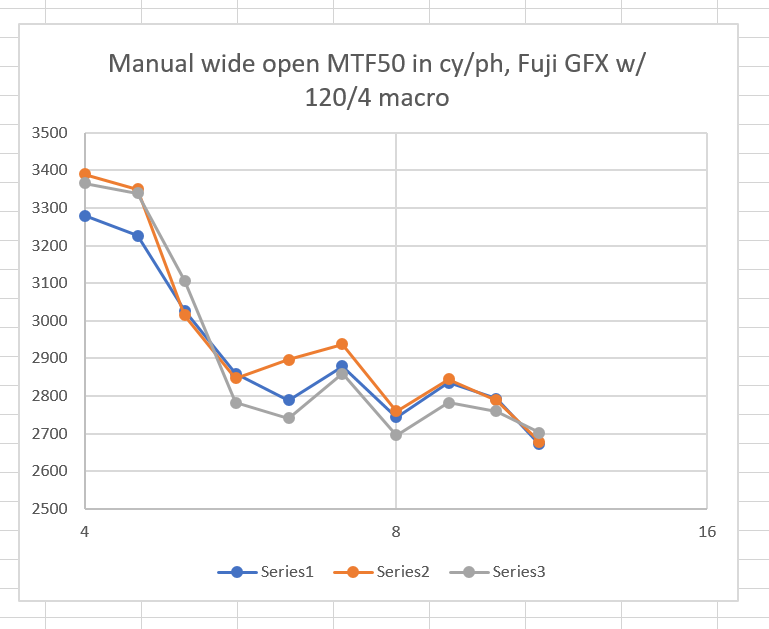This is the 38th in a series of posts on the Fujifilm GFX-50S. The series starts here.
In an earlier post today, I determined that focusing the Fuji 63 mm f/2.8 manually wide open was a good choice. The focus shift in that lens is not enough to negate the more accurate focusing that can be obtained with the lens wide open.
Will that strategy work with the 120 mm f/4 macro?
Not so much.
Here are three series obtained by focusing the lens wide open and progressively stopping in down in third-stop increments. No setting is as sharp as wide open, even though we know that htis lens can turn in excellent performance at f/5.6 and f/8.
Yuk.
At least there is no sign of the inability to consistently hold focus position that plagued the 63 mm lens.

Thanks for your excellent reviews!
In my studio I have difficulty in composing with the 32-64 stopped down as the viewfinder goes dark. Is there a setting to allow composing and focus wide open and like Canon lenses, the aperture closes down when the shutter is triggered?
Right now I focus wide open and then cues how much I am resetting the aperture as I can’t see what the setting becomes!!
I do have adequate modeling lights!